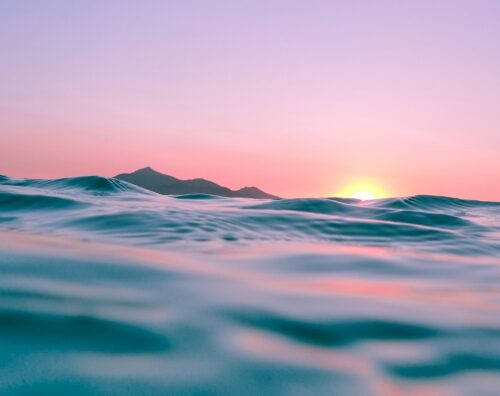
More evidence emerges that Antarctica has undergone rapid glacier and sea ice expansion in recent centuries, in line with the long-term and recent Antarctic cooling trend. [emphasis, links added]
West Antarctica’s mean annual surface temperatures cooled by more than -1.8°C (-0.93°C per decade) from 1999-2018 (Zhang et al., 2023).
Not just West Antarctica, but most of the continent also has cooled by more than 1°C in the 21st century. See, for example, the ~1°C per decade cooling trend for East Antarctica (2000 to 2018) shown in Fig. ES1 (right).

According to a new study, about 6,000 years ago Antarctica’s Collins Glacier’s frontline was a full 1 km southwest of its current extent. The frontline advanced to today’s extent ~5,000 years ago.
“Previous studies proposed that 6,000 yr BP [Before The Present Era], the frontline position of the Collins Glacier was located 1 km further southwest than the present and that the current frontline was first attained at approximately 5,000 yr BP.”
The glacier then continuously retreated south of the modern extent for another 4,000 years, with peak ice loss 1,000 years ago (as shown in the 1,000-year “Proglacial lake environment” image).
In the last 1,000 years, this glacier has rapidly re-advanced back to the glaciated extent from 5,000 years ago, which is in line with the sustained cooling trend ongoing since the Medieval Warm Period.

Throughout the Holocene (Medieval Warm Period, Roman Warm Period, and earlier) and until a few hundred years ago (from ~7,100 to 500 years before the present), coastal Antarctica’s Victoria Land (VLC) was substantially warmer than today.
The Ross Sea was also sufficiently ice-free to allow for elephant seal populations (as large as ~200,000 individuals) to thrive at 73-78°S.
Today, however, elephant seal populations – which require extended sea ice-free sea waters to breed, forage, and provide nourishment for their pups – can no longer subsist anywhere even remotely close to the coasts of the Antarctic continent. It is now too cold and the sea ice is too extensive.
The substantially reduced number of remaining elephant seals existing today can only survive on subantarctic islands (South Georgia, Macquarie) at southern South American latitudes (~54.5°S) situated 2,400 kilometers north of VLC (Koch et al., 2019).
The “genetically distinct” VLC elephant seal populations that endured throughout the Holocene and even through Medieval times have tragically died off in the last few centuries due to the modern-era cooling gradient and subsequent ice cover expansion (Hall et al., 2023).
“Across all sites, there is a precipitous drop in the number and geographic extent of the SES [southern elephant seals] remains within the last millennium”
“…the documented population crash and abandonment of the entire coast by SES after ~1000-500 yr BP was due to return of heavy sea ice”

And with the modern sea surface temperatures cooling and southern hemisphere sea ice expansion in recent decades, even the subantarctic islands in the South Pacific that SES are limited to occupying today may not be sufficiently warm and ice-free to accommodate remaining populations.
Today’s southern elephant seals are thus ironically threatened by cooling in the era of anthropogenic global warming.
“[P]ack-ice expansion (both duration and extent) in the Ross Sea over the last several decades has been linked to reduced female foraging in this region, consequent low weaning weights and survival of pups, and ultimately the decline of the Macquarie Island population.”
Interestingly, Hall et al. also report that not only have the last few centuries (including the present) been “the coldest, iciest conditions in the post-glacial period” (see the blue sea ice and red temperature trend lines on the Holocene timeline), but even the last glacial period had periods (~50,000 to 25,000 years ago) with less sea ice than today, allowing SES to occupy the VLC coast.
Read more at No Tricks Zone



















Why does Biden hate elephant seals? Now it looks like all the steps the climate alarmists have taken are now going to kill us all in new ice age.
So the “Coming Ice Age” guys were right, after all.
You need more ice when it gets warm.
(Just Kidding-Climate Changes all the time and the hottest year on record was 1936)
This is one of the most interesting areas for climate research. But we will have studies concluding that more ice means global warming soon
So why would the Eco-Freaks select a Seal Eating Preator the Polar Bear as their Climate Change Mascot? maybe to appeal to those who watched stuff like A Arctic tic Tale until their brains melted or Norm of t he North which is totality awful I understand
I love the internet.
It’s because the CocaCola polar bears were popular at the time. 🤷♂️
Elephant Seals need to be the symbol for more CO2 in the atmosphere to warm up Antarctica.